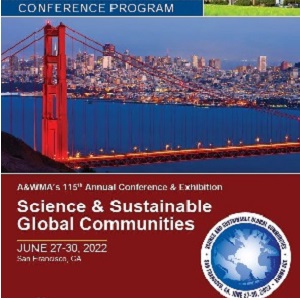Back
Technical Poster
Atmospheric Processes (AP)
Session : Technical and Student Poster Session
1164878 - Impact Analysis of PM2.5 Concentrations in Port Areas Due to Reduction of Ship and Ship-Related Emissions in Korea
Tuesday, June 28, 2022
10:45am – 12:15pm PT
Location: Exhibit Hall
- YS
Young Sunwoo, Ph.D
Professor
Konkuk University
Seoul, Seoul-t'ukpyolsi, Republic of Korea - MK
- CH
- CC
- JK
Jeeho Kim
Seoul-t'ukpyolsi, Republic of Korea
- YJ
- YK
- YC
Primary Author(s)
Co-Author(s)
According to the ‘National Air Pollutant Emissions Statistics’ provided by the Korean government, ships are the biggest source of air pollutant emissions among Korea's non-road mobile sources. These ship and related air pollutant emissions have a significant impact on the air quality of ports and nearby areas due to activities such as ship entry and exit and berthing, freight unloading and associated land transportation. Accordingly, in Korea, air pollution control policies are being implemented to reduce ship-related emissions. In predicting and analyzing the impacts of these policies, it is very important to identify the temporal and spatial allocation of emissions from air pollutants sources and to accurately input them into a 3-dimensional chemistry transport model.
In this study, we attempted to improve the temporal allocation of ship emissions by utilizing recent ship activity data. Using CMAQ (Community Multiscale Air Quality Modeling System), the impacts on air quality in port areas due to reduction of air pollutant emissions related to ships are analyzed. Contribution analyses of high PM2.5 concentrations in the major port areas were performed for the south coast area including Busan port. In order to analyze the effects of air quality improvement due to Korea's ship-related emission reduction measures, the forecast emissions for 2025 BAU and emission reductions by each reduction measure were calculated. Improvements are analyzed using the WRF-SMOKE-CMAQ modeling system.
According to this study, sulphate was the material that contributed most to secondary PM2.5 concentration when high concentrations of PM2.5 were generated at Busan port. The air quality improvement effect of ship-related emissions reduction measures without temporal allocation improvement was at maximum 14.17 ㎍/㎥ for PM2.5 and up to 37.4 ppb for SO2 and 3.8 ppb for NO2. Results obtained after temporal allocation improvement will also be presented.
[Acknowledgement]
This work was supported by Ministry of Environment as "the Graduate school of Particulate matter specialization"
In this study, we attempted to improve the temporal allocation of ship emissions by utilizing recent ship activity data. Using CMAQ (Community Multiscale Air Quality Modeling System), the impacts on air quality in port areas due to reduction of air pollutant emissions related to ships are analyzed. Contribution analyses of high PM2.5 concentrations in the major port areas were performed for the south coast area including Busan port. In order to analyze the effects of air quality improvement due to Korea's ship-related emission reduction measures, the forecast emissions for 2025 BAU and emission reductions by each reduction measure were calculated. Improvements are analyzed using the WRF-SMOKE-CMAQ modeling system.
According to this study, sulphate was the material that contributed most to secondary PM2.5 concentration when high concentrations of PM2.5 were generated at Busan port. The air quality improvement effect of ship-related emissions reduction measures without temporal allocation improvement was at maximum 14.17 ㎍/㎥ for PM2.5 and up to 37.4 ppb for SO2 and 3.8 ppb for NO2. Results obtained after temporal allocation improvement will also be presented.
[Acknowledgement]
This work was supported by Ministry of Environment as "the Graduate school of Particulate matter specialization"

.jpg)
